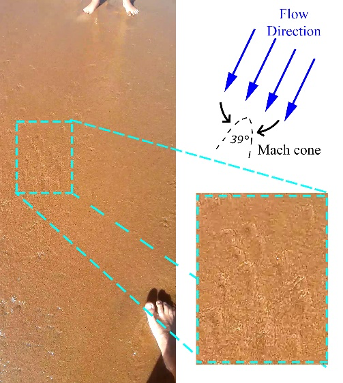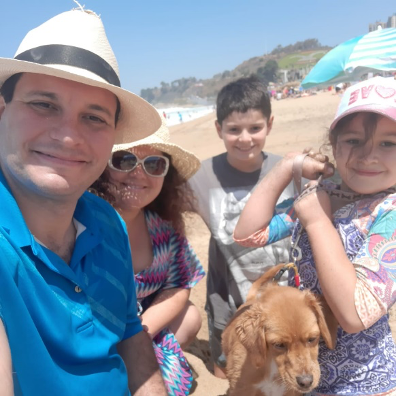Super excited to share a guest post today: Felipe is writing about his recent #WaveWatching article on “Evaluating shallow water waves by observing Mach cones on the beach”. I came across this article and was going to write a summary, but how much cooler is it to hear from Felipe himself? Thank you for being here! :)
—
My name is Dr Felipe Veloso1 and I tremendously appreciate Dr Mirjam Glessmer invitation to write this post and letting me contribute to the terrific #WaveWatching collection!!
One of the spectacular things of #WaveWatching is that the observations are ubiquitous. It doesn’t matter if you live in Germany, USA, Japan or Chile. Oscillations and waves are there, whether you observe swimming pools, lakes, sea, or even a relaxing bathtub ready for you. In all cases, the water is always naturally oscillating in a comfortable dance combining up-and-down and back-and-forth movements. If you enjoy these natural phenomena like I do, invest some of your time and take a look to the wonderful #WaveWatchingWednesday and #KitchenOceanography collections that Mirjam has gathered for us. But there are some occasions that these wave phenomena are obscured to our naked-eye observations and a more careful revision is needed to figure out where these oscillations are hidden. A turbulent river coming down of a hill, or the simple passing of fast water flow in front of our eyes are some examples of “waves hidden at first sight”. Such situation occurred to me in the latest family vacations we had as a break from the lockdowns imposed by the pandemia. In particular, this situation became the reason of an article in Physics Education, and also the reason of why I am writing these lines.
In an attempt to run away from the contaminated air of Santiago (the Chilean capital city, surrounded by mountains), we drove ~90 minutes to Viña del Mar city, to enjoy one week in the beach side. In this place, with the appropriate weather and personal calmness, families can enjoy the waves crushing the beach, the rising of children as “sand engineers”, and the “continuous fight” between these children and the ocean waves to avoid the destruction of the sand fortresses by the water. It is in this relaxing and family-friendly environment where my story begins.
My kids are playing in the sand and my feet are partially covered by water. After long time, we are able to come out from our houses after several months of mandatory quarantines, pandemic stress, and online teaching activities. In this particular moment, watching waves looks like a perfect panorama for me. Suddenly, the voice of my daughter Pilar wakes me up and asked me two questions: “Dad, what are you looking in the water?… and dad, why does the water creates those conical shapes at the end of the undertow current?” The first answer was easy. I was #WaveWatching. But the second answer was not so simple. What about those conical shapes?

Mach cones observed in the surface of undertow water produced by stationary millimeter grains/seashells in sand. Those feet belong to my daughter Pilar and myself. Image taken from the article.
Before her question, I haven’t thought on that. Rapidly, I realized I was observing a wave phenomena in a different and non-standard way. We were observing shock waves in the shape of Mach cones!! These cones appear when an object moves inside of a fluid with a relative velocity larger than the natural oscillation velocity of the fluid. In these situations, there is a shock occurring in the fluid itself. The tip of the cone (or V-) shape arises from the relative movement of the object, whereas the radial expansion of the wave creates the sides of the cone. This explains the formation of V-shapes in the water when a ship travels in a river, or when ducks swim in the lake. In the case of beach observations, the cones were originated by stationary small seashells or larger grains buried in the sand when the undertow water current returned back to the sea with depth not sufficient to immerse my toes.
Now, I am not really sure if my 8 years-old daughter or my 11 years-old son understood completely my explanations of waves and Mach cones. But, I am sure they understood that observing nature can be a fun and relaxing activity to enjoy in family vacations. As an exercise, I taught them how to compute the wave velocity by measuring these Mach cones. I also show them that we did not need any fancy or expensive equipment to accurately evaluate it. We only require interest and fascination on looking for an explanation of a natural phenomena… a phenomena that they could observe while enjoying the beach, the sand and the family time.

Family picture in Viña del Mar. My beautiful wife Alicia, my kids Diego and Pilar and myself. And of course, our dear dog Chewbacca trying to run away from the camera.
Further details can be found in the paper: Felipe Veloso (2021) “Evaluating shallow water waves by observing Mach cones on the beach” Phys Education 56, 054001.